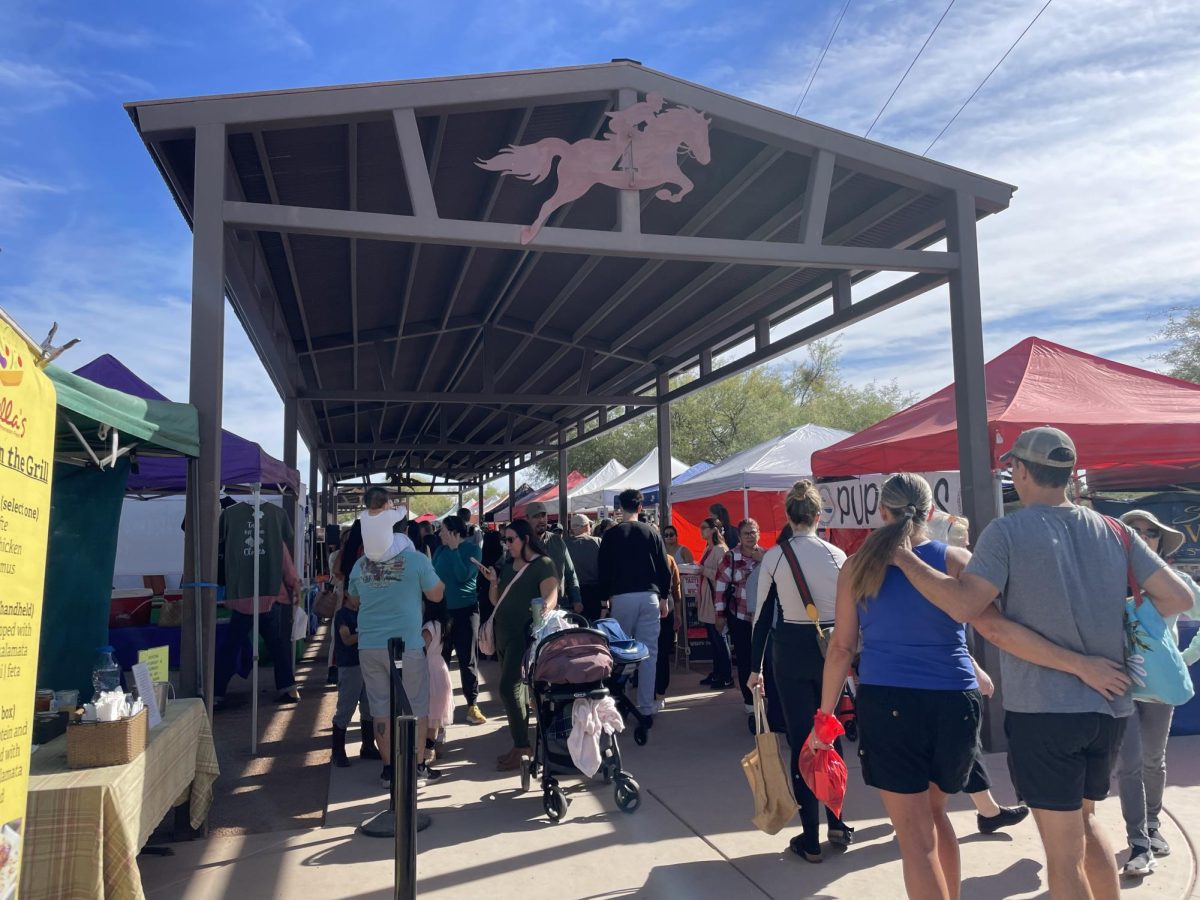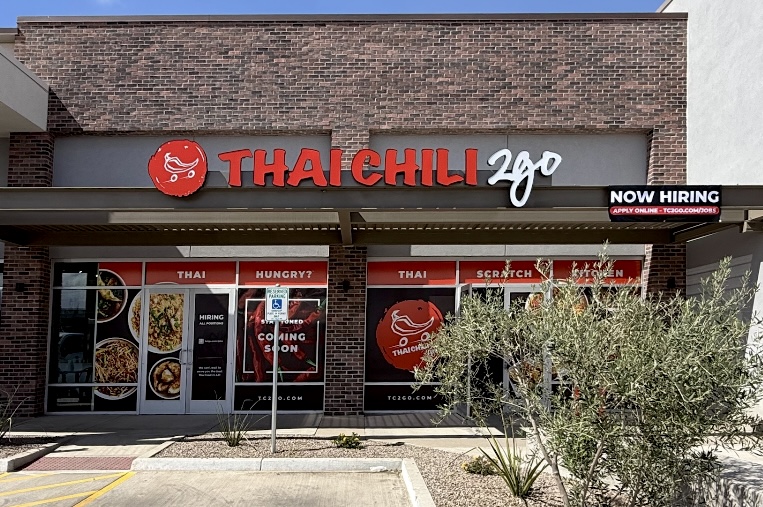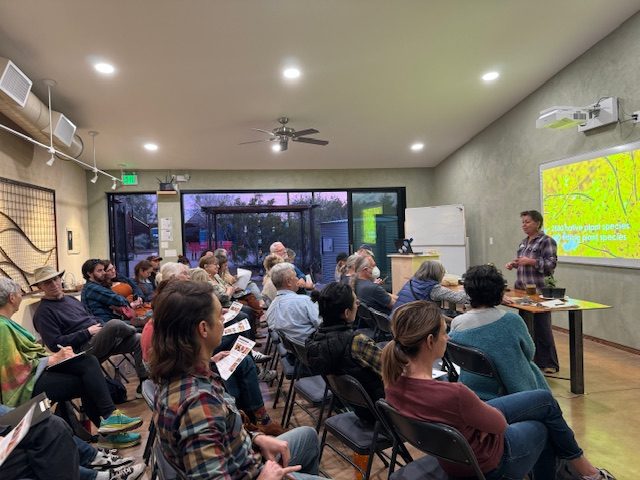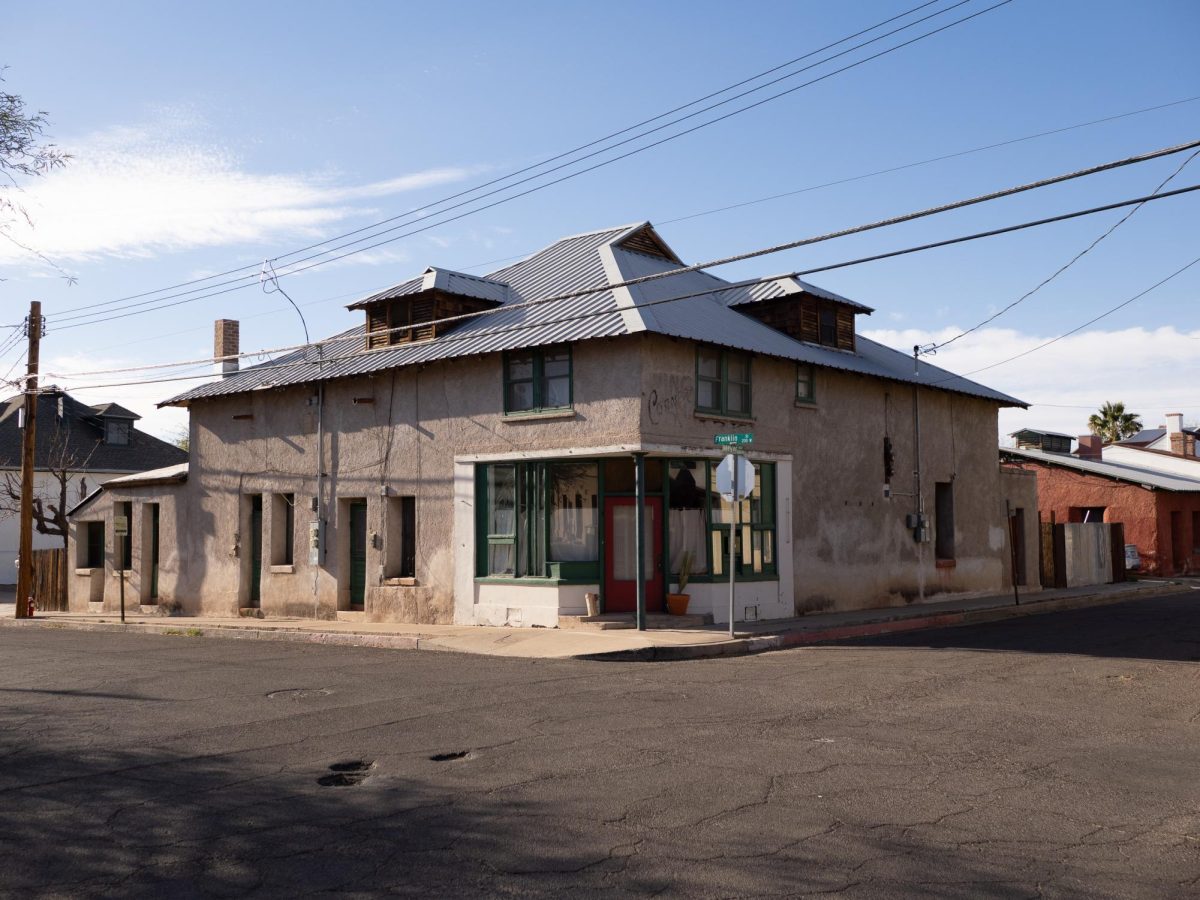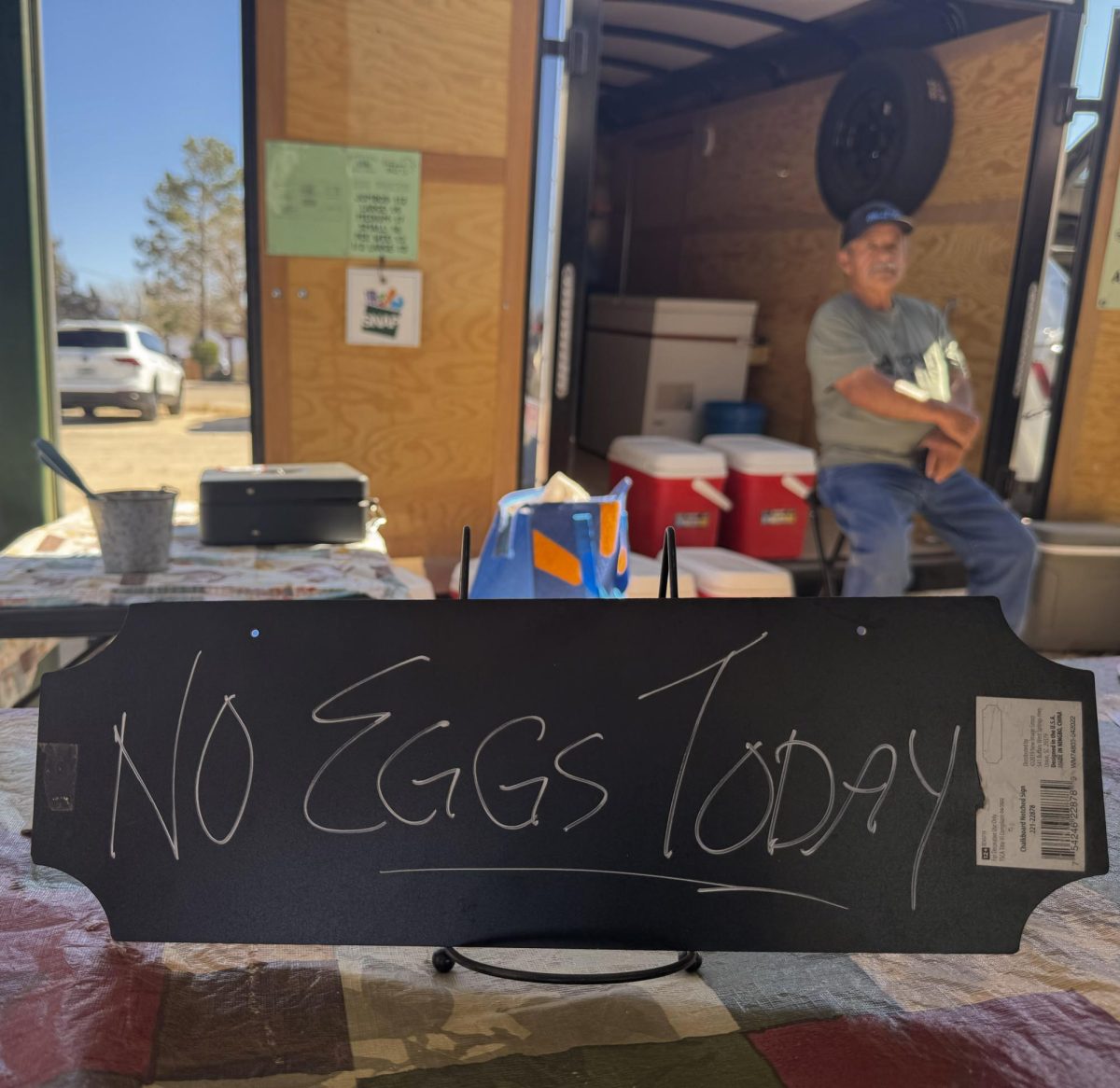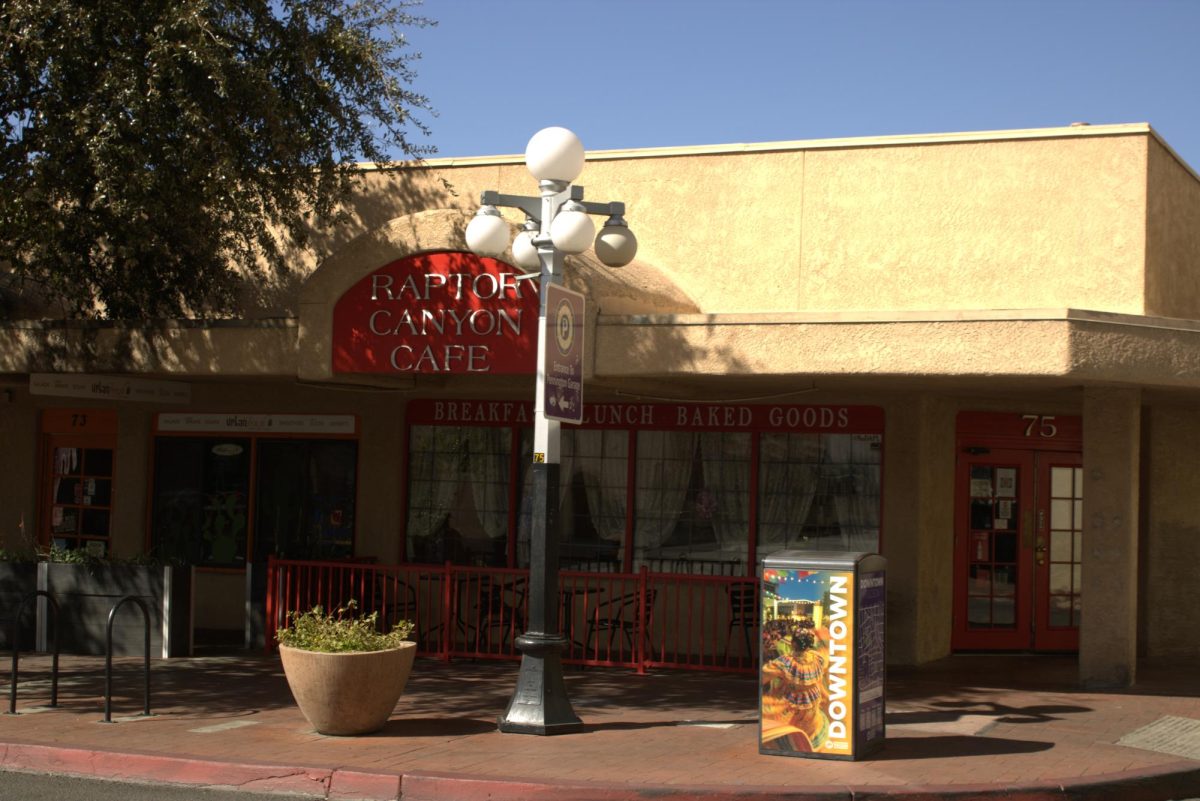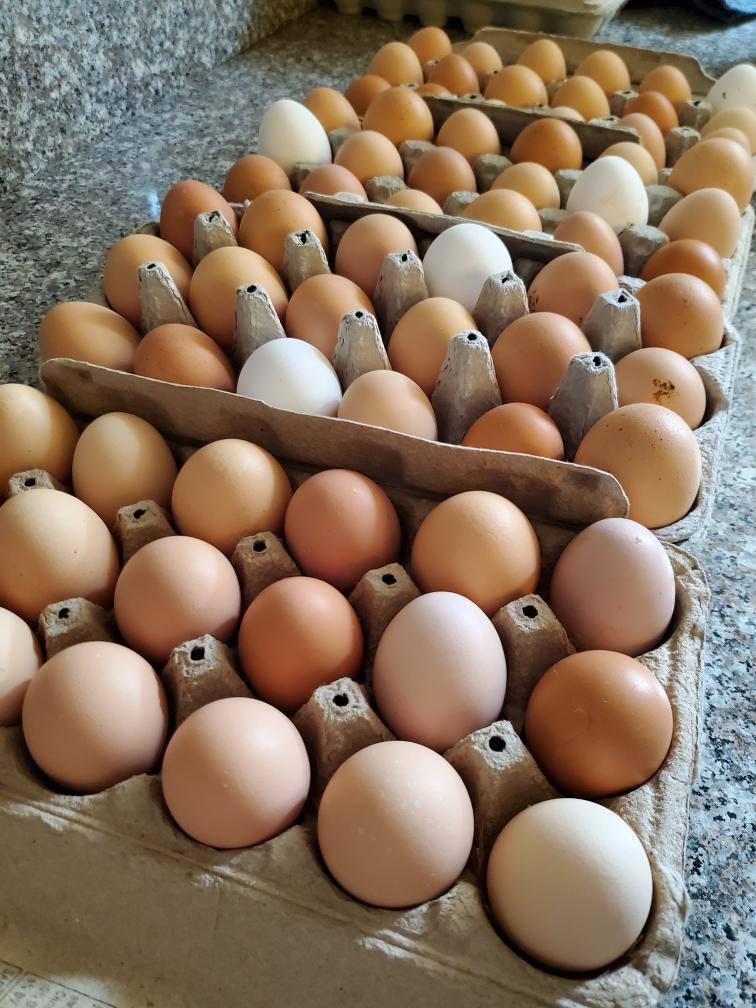Under the warm Tucson sun, the Rillito Park Heirloom Farmers Market comes alive with vibrant colors and rich scents. Rows of canopies shelter piles of rich tomatoes and jars of thick honey arranged by loving hands. The air hums with guitar music, children’s laughter and the scent of fresh bread and herbs. Shoppers browse carrying baskets brimming with organic produce, sampling tangy cheeses and spicy salsas, while vendors share stories of their carefully curated product.
In Tucson, farmers markets like this one have become a cornerstone of the local economy, offering opportunities for small businesses, promoting sustainability and creating a sense of community. These markets are vital economic hubs that support local vendors and contribute to the city’s overall cultural and financial landscape.
From small-scale entrepreneurs to larger community initiatives, farmers markets are actively reshaping the way Tucson operates.
Stephanie Spencer, business advocacy specialist at the Tucson Metro Chamber, said farmers markets are important in supporting a free-market economy.
“We are very much in support of giving folks the opportunity to make a business for themselves,” she said.
Many local restaurants source their ingredients from small vendors, who often get their start at farmers markets.
“We see a lot of cottage food items circulated within restaurants, and a lot of times you don’t realize it, but they are on their menus and they are locally sourced from folks that are probably engaging in local farmers markets,” Spencer said.
Farmers markets in Tucson are also central to creating a circular economy, where local spending directly benefits the community.
“We like to keep money in Arizona and bring money back to the local community,” she said. “I would say that those folks that are operating within farmers markets are doing that.”
This is a significant advantage of farmers markets, said Lena Melnick, director of operations at Heirloom Farmers Markets, a non-profit organization that operates five farmers markets in Southern Arizona.
“For every dollar spent at a farmers market, 60 to 80 cents is reinvested locally. This is much higher than chain stores, where only 15 to 30 cents remains in the local economy,” she said.
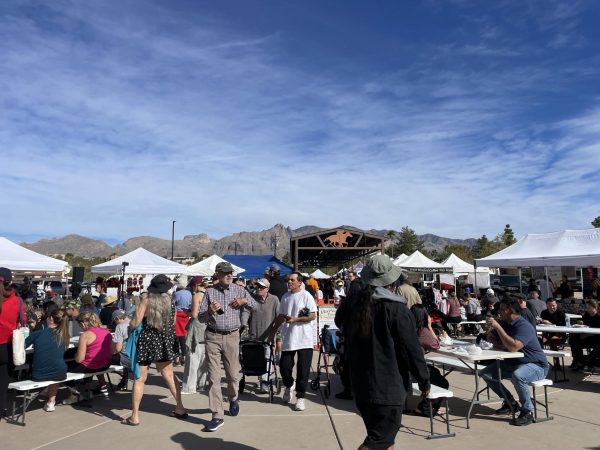
There are 20 weekly farmers markets operating in the Tucson area.
The direct-to-consumer model offered by farmers markets eliminates intermediaries, ensuring that vendors retain all of their revenue. This model has allowed several small businesses to grow and eventually establish permanent locations in Tucson.
“We have several vendors who started out at the market and now have successful brick-and-mortar locations throughout Tucson,” Melnick said. “Tumerico, Selena’s Salvadorian, Del Cielo Tamales, Café Francias, Bubbe’s Bagels and Fiamme Pizza are some that have really taken off.”
The higher profit margins vendors enjoy at farmers markets have played a significant role in these success stories.
“Studies show that vendors at farmers markets report 10 to 20 percent higher profit margins compared to wholesale or distributor sales,” Melnick said.
The economic boost of farmers markets extends beyond the vendors to others in the community.
“Markets draw foot traffic, with 60 to 70 percent of attendees visiting nearby stores or cafes. Retailers near farmers markets report increased sales of 10 to 15 percent on market days,” Melnick said.
This points to the broader community impact of shopping locally.
“When you are supporting local businesses and local enterprises, you’re supporting those that are right here at home and those dollars stay in your community,” said Barbra Coffee, director of the Office of Economic Initiatives for the City of Tucson.
Tucson Village Farm is a product of the Pima County Cooperative Extension and the University of Arizona. This seed-to-table program designed to connect young people to a healthy food system hosts a Midweek Market every Wednesday from 4-6 p.m.
Ann Wilds, who works with AmeriCorp at the farm, said that the profits of their market go entirely towards fueling their goal of positive youth development in Tucson. The revenue supports their community programs, exemplifying a circular economy at work.
Wilds said farmers markets provide personal connections for consumers.
“I know that the community loves having farmers markets because it’s local, fresh and provides a sense of community. It feels personal, instead of the grocery store,” she said.
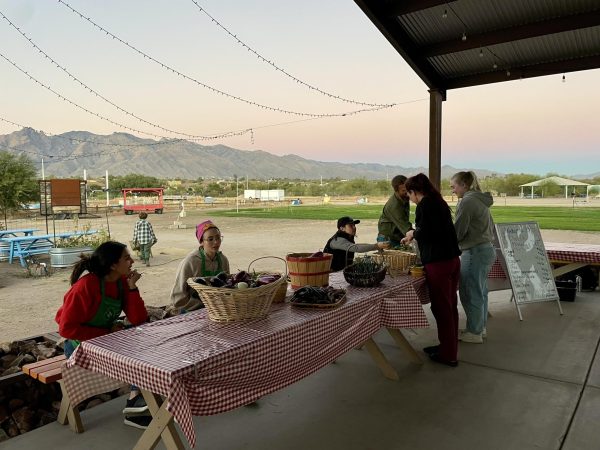
Visitors at the Midweek Market at the Tucson Village Farm pick up fresh produce on Nov. 13, 2024.
The personal interactions that occur at farmers markets are a unique aspect of the shopping experience.
“The cool thing about a farmers market is that you are person-to-person, one-on-one with someone. You’re not pointing and clicking and purchasing a product, you’re actually hearing about their story and the ingredients that are in those products,” Coffee said.
This connection is particularly appealing to a population that is increasingly interested in the origins of their food and environmental sustainability.
“I think more and more, especially younger generations, are in tune with the environment and where their food is coming from,” Coffee said.
Jonathan Mabry, director of Tucson City of Gastronomy, said the success of farmers markets boosts tourism.
“Farmers markets contribute to Tucson’s reputation as a food destination,” he said. “They help showcase the region’s unique agricultural heritage and culinary innovations, attracting tourists and visiting food enthusiasts.”
He said crowds at farmers markets reflect a broader trend toward localized food systems and community-based economic development.
“Farmers markets in Pima County serve as important economic engines, supporting local agriculture, creating jobs, improving food access and contributing to the region’s cultural identity and tourism appeal,” he said.
The Santa Cruz River Farmers Market, operated by the Community Food Bank of Southern Arizona, is one example of how farmers markets prioritize accessibility for vendors. Amrita Khalsa, the farmers market network and advocacy coordinator for the food bank, explained their approach.
“The Santa Cruz River Farmers Market has a 10 percent vendor fee, which helps to make the market accessible to small businesses. Many markets have high vendor fees, which can be a barrier,” she said.
She also emphasized the importance of educating the community about the value of supporting local agriculture.
“We are helping to support the growth of our local economy, while also teaching our community members the importance of supporting smaller businesses and the reasons local produce might cost more than what is found at grocery stores from large industrial farms,” Khalsa said.
With 20 weekly farmers markets operating in the Tucson area, they have become vital outlets for local producers. Mabry estimated that the top 10 markets are attended by almost half a million customers annually, evidence of their widespread appeal.
“During the busy season from November to April, we have over 10,000 weekly customers at our five markets combined,” Melnick said, speaking on the five markets operated by Heirloom Farmers Markets.
The market hosted by the Tucson Village Farm is also thriving.
“When we come back in the winter, it will be bananas. We make about $2,000 a market during those busy months,” Wilds said.
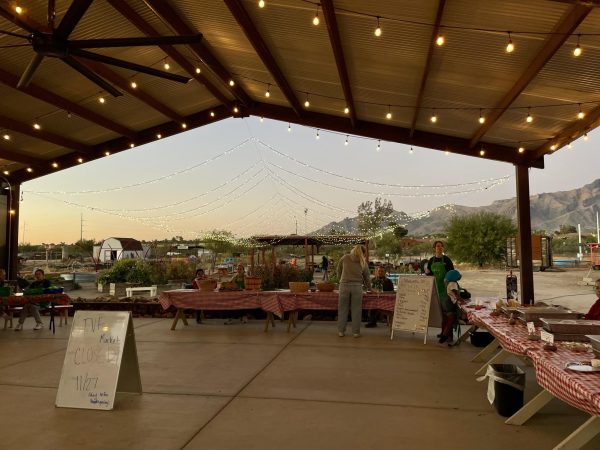
The Tucson Village Farm on Campbell Ave. offers a stunning backdrop for boosting the local economy.
From providing a launching pad for small businesses to promoting sustainability and strengthening community bonds, farmers markets are a vital part of Tucson’s identity.
“Their growth and popularity here reflect a broader trend towards localized food systems and community-based economic development,” Mabry said.
In Tucson, these markets are ensuring that local businesses thrive, dollars stay within the community and residents enjoy a vibrant and connected way of life.
Arizona Sonoran News is a news service of the University of Arizona School of Journalism.



